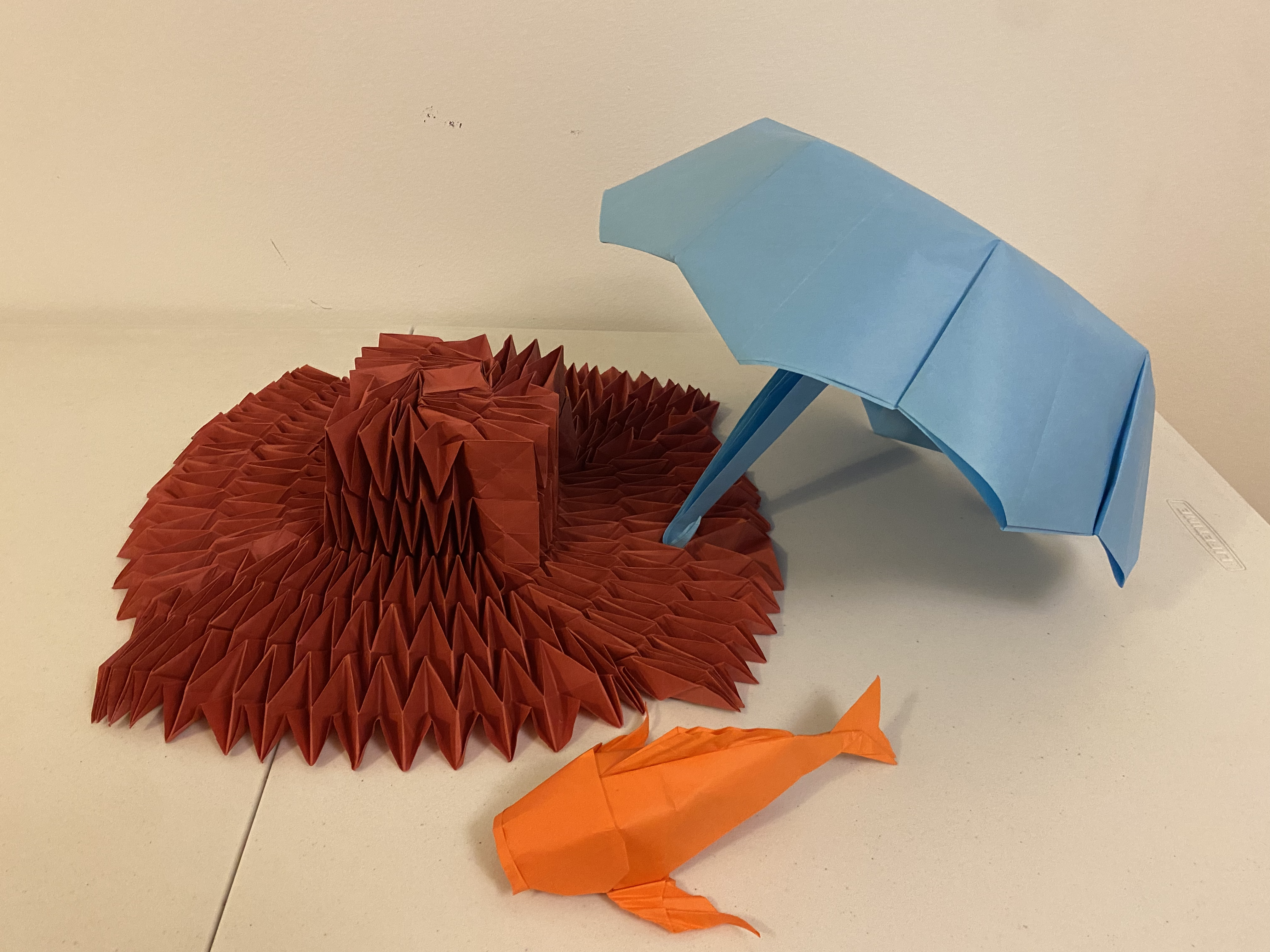
All pieces were folded by me. The umbrella is my own design. The flasher hat and the koi were designed by Jeremy Shafer and Riccardo Foschi respectively.
Update: My work was accepted in an exhibit.
Recently, I was inspired by Haruki Murakami’s Kafka on the Shore to fold an umbrella, a hat, and a fish. These pieces are meant to honor a character in the novel, Mr. Nakata. In Murakami’s whirlwind of magical realism, Mr. Nakata seems to have the most direct access to the supernatural forces at play. He speaks to cats; he makes fish rain from the sky; he goes on an increasingly strange series of adventures to restore the state of the universe.
Although Mr. Nakata has such a strong connection to the strange occurrences in the book, he has very little understanding as to why. At each turn, he is unwaveringly sure of what his next step must be. He knows to go to Takamatsu. He knows to find the entrance stone. He knows to talk to the librarian of the Komura Library. But despite his confidence, he has never heard of Takamatsu before arriving. He has never seen the entrance stone before beginning his search. He has never met this librarian in his life. As one character put it, “You don’t know why you’re going, or even where you’re going.” And that’s true. He doesn’t know. He doesn’t know why or where or how, but he’s going. He’s going, and that’s what matters.
I was curious as to what inspired Murakami to write such a character, so I read through some interviews. In answering this question, Murakami responds, “Why did I create a character like him? It must be because I like him. It’s a long novel, and the author has to have at least one character he loves unconditionally.” This unconditional love poured into Mr. Nakata by Murakami can be seen inside the book and out. Other characters are quick to trust him, appreciating his sincerity and simple kindness. Readers are quick to empathize with him as he tries to live his life in an incomprehensibly complex system.
Mr. Nakata’s journey mirrors the experience of most readers that approach this story. This story is full of riddles and mysteries, and as you move forward, you reveal more questions than you do answers. Readers are sucked into a labyrinth of magical realism, and they don’t quite know why they’re going or even where they’re going, but they go regardless.
Even Murakami relates to Mr. Nakata in this way. Murakami set out to write a novel in which the solutions lie partly in the riddles themselves. Initially, he didn’t have all the details in view, but he wrote the novel regardless. Over time, he gained a better understanding of the story by reading it again and again as he rewrote it. For this reason, he recommends readers read the novel more than once—if they have the time—to understand it better. Going through that first pass, the reader is almost as lost as Mr. Nakata, trying to find answers despite barely understanding the questions. Even to the author, the whole story is one, big puzzle.
In no way am I trying to deny Murakami’s incredible intentionality in his writing. He crafted a literary puzzle that demands rereading just to appreciate a fraction of the details. Murakami couldn’t fully solve his own riddles the first time through, but he unraveled the mysteries through rereading as he wrote the story. Mr. Nakata, however, only gets to live through the story once. He will never read it a second time. He doesn’t get to unravel the mysteries like the reader, but he goes regardless, wearing his hat and carrying his umbrella while fish fall from the sky.
